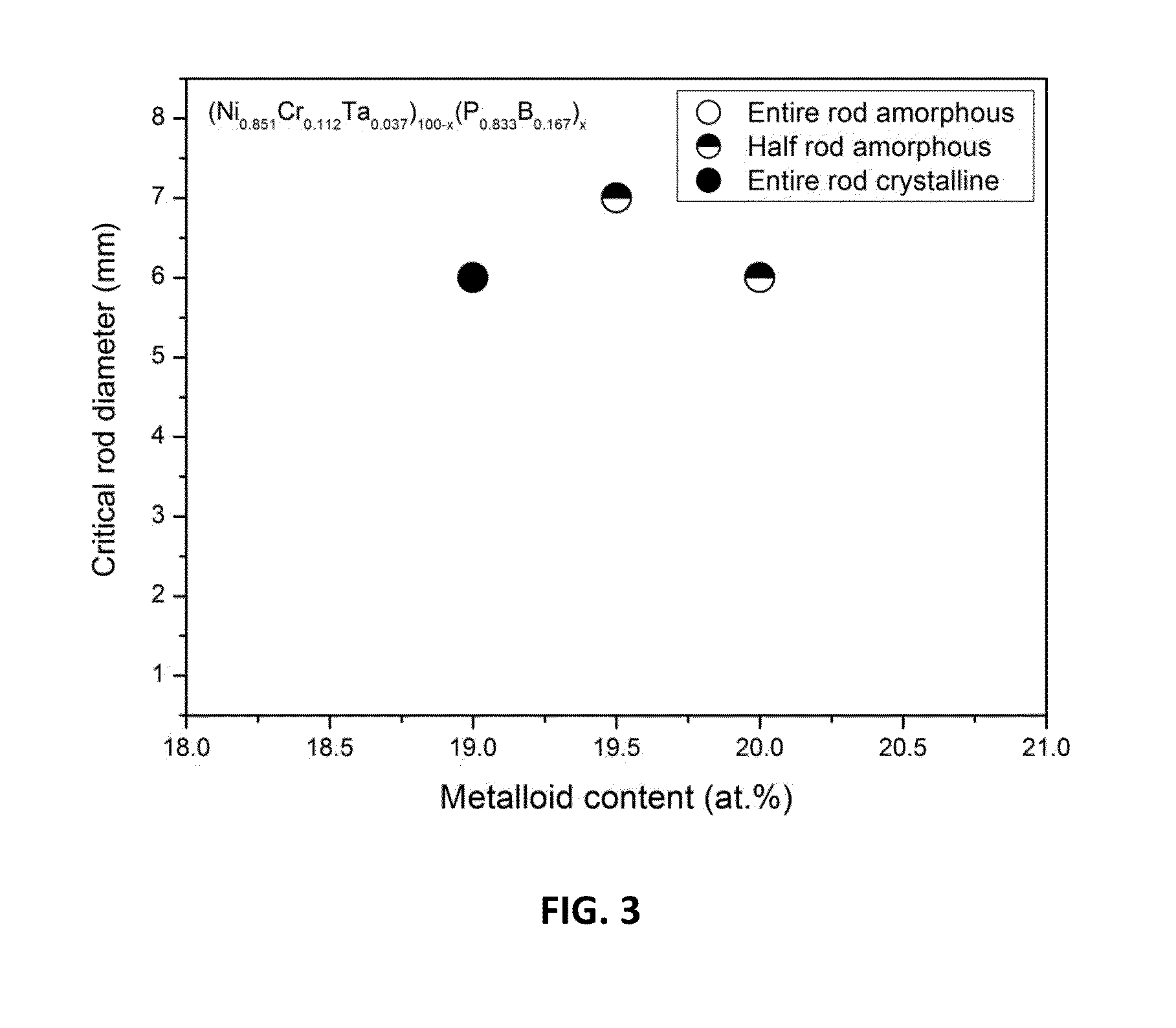Bulk nickel-phosphorus-boron glasses bearing chromium and tantalum
a technology of nickel-phosphorus-boron glasses and tantalum, which is applied in the field of ni — cr — ta — p — b glasses, can solve the problems of limited glass forming ability of alloys, significant influence on the overall price associated with the commercial production of alloys, and limited thickness of metallic glass objects that can be formed from such alloys
- Summary
- Abstract
- Description
- Claims
- Application Information
AI Technical Summary
Benefits of technology
Problems solved by technology
Method used
Image
Examples
Embodiment Construction
Description of Alloy Compositions
[0050]In accordance with the provided disclosure and drawings, Ni—Cr—P—B alloys containing Ta and being entirely free of Nb are capable of forming bulk metallic glasses having glass-forming ability (GFA) comparable to the Ni—Cr—Nb—P—B alloys. Specifically, Ni-based compositions with a Cr content of between 3 and 11 atomic percent, a Ta content of between 1.75 and 4 atomic percent, a P content of between 14 and 17.5 atomic percent, and a B content of between 2.5 and 5 atomic percent, were capable of forming metallic glass rods with diameters of at least 3 mm.
[0051]In some embodiments, certain Ni—Cr—Ta—P—B alloys lie along a well-defined GFA ridge, which a series of continuous cusps in GFA inside the compositional space defined by the Ta and Cr content, along which metallic glass rods with diameters of at least 6 mm can be formed. In particular embodiments, by controlling the relative concentrations of Ni, Cr, and Ta, and by incorporating minority addi...
PUM
| Property | Measurement | Unit |
|---|---|---|
| root radius | aaaaa | aaaaa |
| root radius | aaaaa | aaaaa |
| root radius | aaaaa | aaaaa |
Abstract
Description
Claims
Application Information
 Login to View More
Login to View More - R&D
- Intellectual Property
- Life Sciences
- Materials
- Tech Scout
- Unparalleled Data Quality
- Higher Quality Content
- 60% Fewer Hallucinations
Browse by: Latest US Patents, China's latest patents, Technical Efficacy Thesaurus, Application Domain, Technology Topic, Popular Technical Reports.
© 2025 PatSnap. All rights reserved.Legal|Privacy policy|Modern Slavery Act Transparency Statement|Sitemap|About US| Contact US: help@patsnap.com



